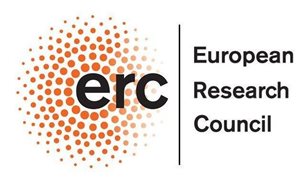
Scientists at Radboudumc have developed a method that allows them to study how cancer cells and immune cells influence each other. This provides more knowledge about how some cancer cells can block the immune response. The research was recently published in scientific journal Cancer Immunology Research.
Our body can arm itself against cancer cells. To do so, it deploys so-called cytotoxic T-cells. These "soldiers of the immune system" shoot holes in cancer cells, causing damage inside. If cells have many of these cytotoxic events, they die. Tumors, however, can bypass the immune system by inhibiting the action of the T-cell soldiers. This makes it harder for the immune system to fight the cancer cells.
Although it has long been known how T-cells kill cancer cells, it was not yet known how some cancer cells fight back. Scientists at the Radboudumc have therefore developed a new method to investigate this process. This shows that some cancer cells can stop the immune system's attack by stopping the T-cells from shooting holes in the cancer cells.
Three-dimensional culturing
For their research, the scientists used a new three-dimensional method, growing cancer cells and immune cells simultaneously. In a transparent culture dish, the cancer cells sit on the bottom, topped by a three-dimensional tissue-like matrix that contains the T-cells. Just as in the body, the T-cells go looking for the cancer cells, and a microscope can be used to make the interaction between the two types of cells visible with very high precision.
That three-dimensional culture method allows the researchers to show at the cellular level how the T-cells go about killing cancer cells. "They attach to their target and fire one or more shots," says Jeroen Slaats, a researcher in the Department of Cell Biology at Radboud university medical center. "Then it's the turn of the next T-cell, which does the same. The T-cells work together as a team, until eventually the cancer cell has been hit so many times that it dies."
Shooting holes
Some cancer cells can nullify that T-cell-killing property of T-cells by blocking calcium channels in the T-cell, Slaats explains. "We see that the T-cells stick to the cancer cells, but they are less successful at shooting holes. As a result, the cancer cells don't die or don't die until later." As if the cancer cell takes the gun away from the T-cell.
Now that the researchers have clarified where in the process the hitch is, they can work on solving the problem. But that's still in the future. "We want to work on controlling the processes in the cancer cell that affect the effectiveness of the T-cell," says Peter Friedl, professor at the Department of Cell Biology at Radboud university medical center. "With a future medicine, it may become possible to make the T-cell fire bullets at the cancer cell again. And if we can give them the weapon back, we can even make T-cells fire more or bigger bullets."
Understanding the mechanism
But it's a long way from that. The researchers emphasize that they are not directly looking for a medicine that will suddenly allow T-cells to attack those cancer cells again. "Our work does not provide a direct solution to a problem," says Friedl. " It's important to first understand what's going wrong before we want to influence it. We now have a better understanding of how tumor cells mislead the T cells."
The first dot on the horizon for the researchers is to offer patients more personalized treatments. "We can use this method to grow a patient's cancer cells and study them much more closely than was previously possible," Friedl says. "Besides understanding the mechanism of cancer cells, that is the added value of our research at the moment."

About the publication in Cancer Immunology Research
Metabolic Screening of Cytotoxic T-cell Effector Function Reveals the Role of CRAC Channels in Regulating LethalQ2 Hit Delivery – Jeroen Slaats, Cindy E. Dieteren, Esther Wagena, Louis Wolf, Tonke K. Raaijmakers, Jeroen A. van der Laak, Carl G. Figdor, Bettina Weigelin, and Peter Friedl.
-
Want to know more about these subjects? Click on the buttons below for more news.
More information
Pauline Dekhuijzen

wetenschaps- en persvoorlichter
Related news items

European grants for groundbreaking Radboudumc research Professors Roshan Cools and Peter Friedl receive ERC Advanced Grant
26 April 2022The European Research Council (ERC) is awarding grants to Roshan Cools and Peter Friedl, both professors at Radboudumc. While Cools will investigate how brains control behaviour in (stressful) situations, Friedl will work on developing a new cancer therapy.
go to page
Rubicon grants awarded to three RIMLS researchers
19 April 2022Three researchers have received Rubicon funding from NWO/ZonMw. This will enable Elke Muntjewerff, Laura de Vries and Laurens van de Wiel to do research at a foreign research institute for the next two years.
go to page
Tackling cancer with radioactive particles
2 September 2021 Professor Sandra Heskamp receives grant for research into cancer treatment with radioactivity go to page
VIDI grants for researchers of Radboud university medical center
14 July 2021 Several Radboudumc researchers have been awarded a VIDI grant by the Dutch Organisation for Scientific Research (NWO). They each receive a sum of 800,000 euros, which they will use over the next five years to develop their own innovative line of research and to set up a research group. go to page
Vaccination with immune cells boosts immune system after stem cell transplantation
1 June 2021 Jesper van Eck van der Sluijs and other researchers have developed a method for growing different types of dendritic cells: the cells of the immune system that specialize in processing foreign substances (including tumor proteins) and presenting them to killer cells. go to page